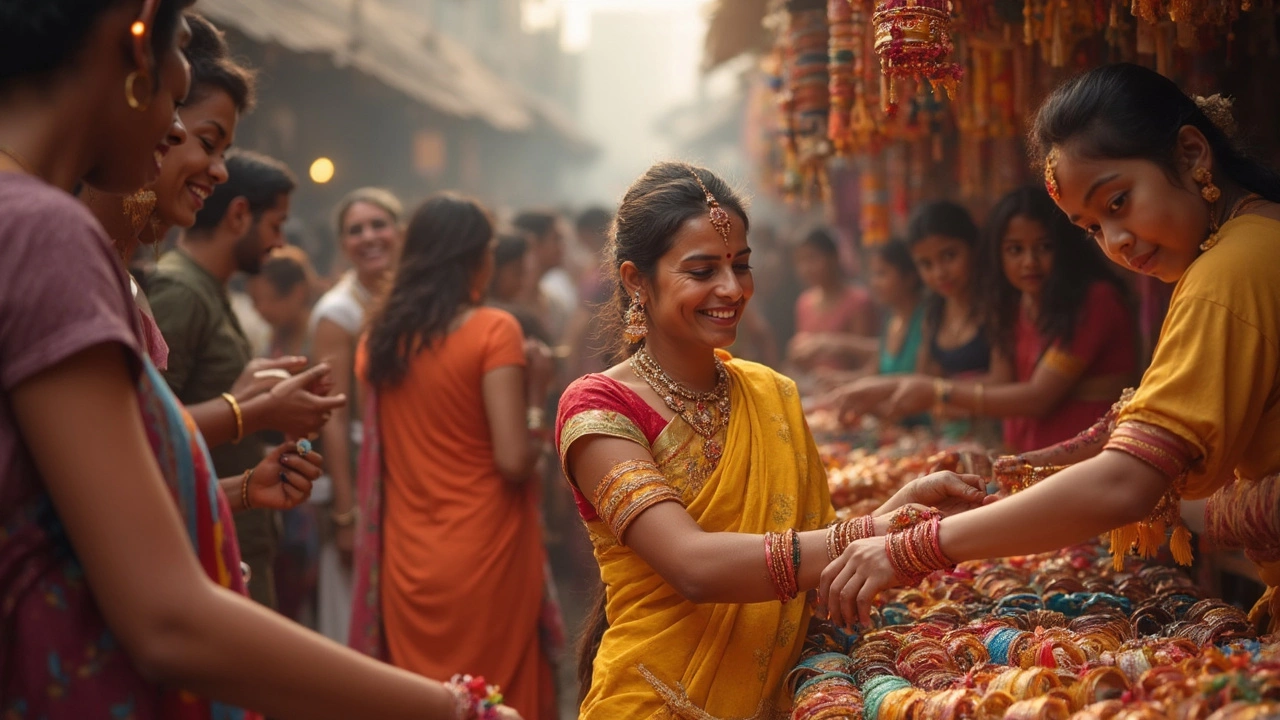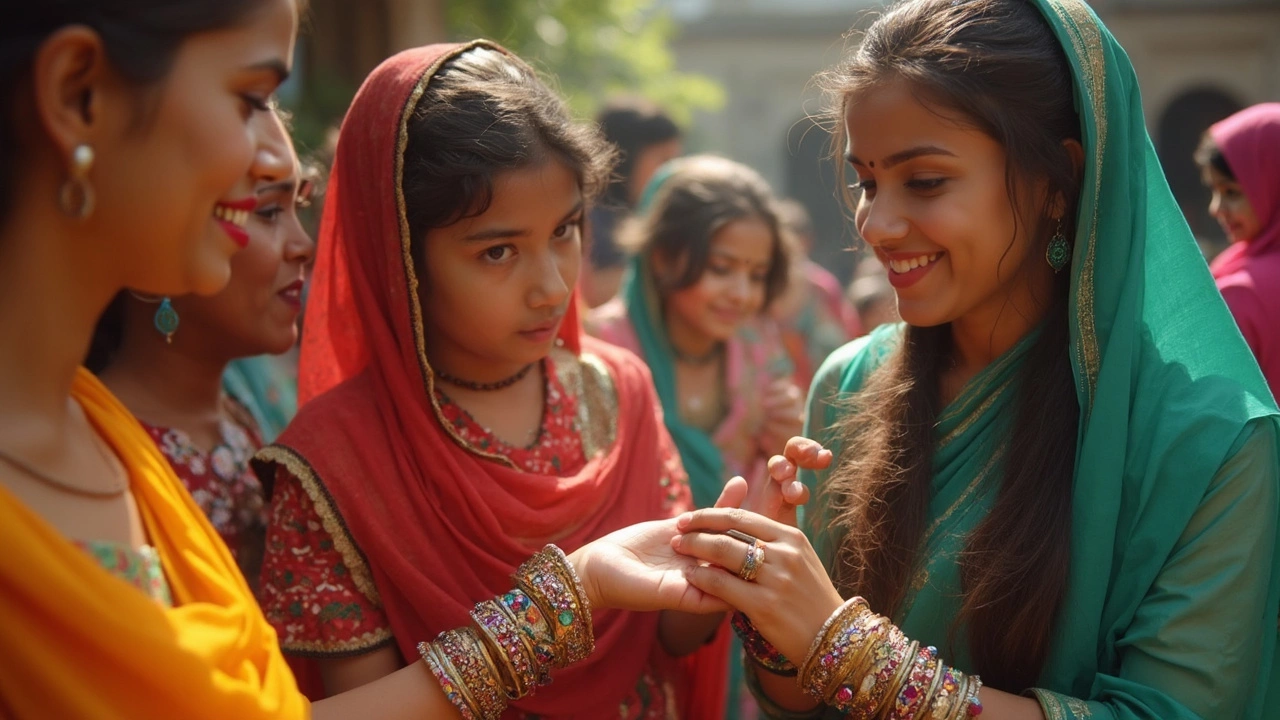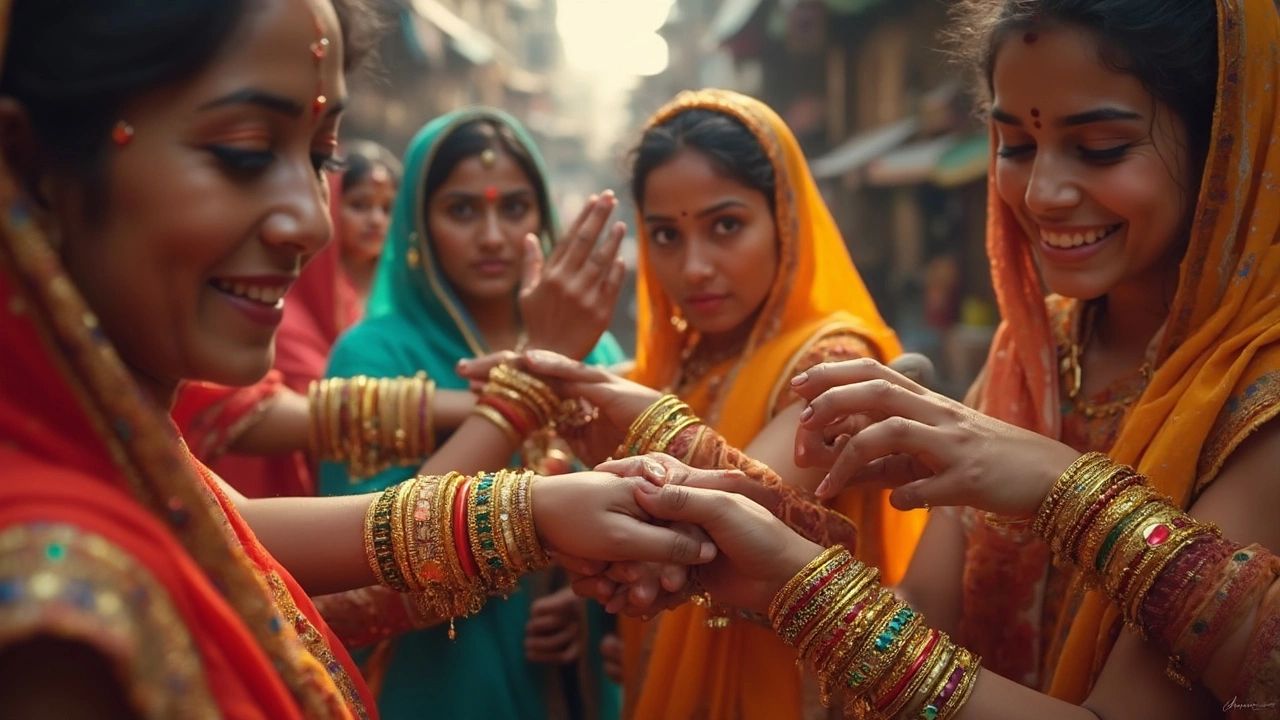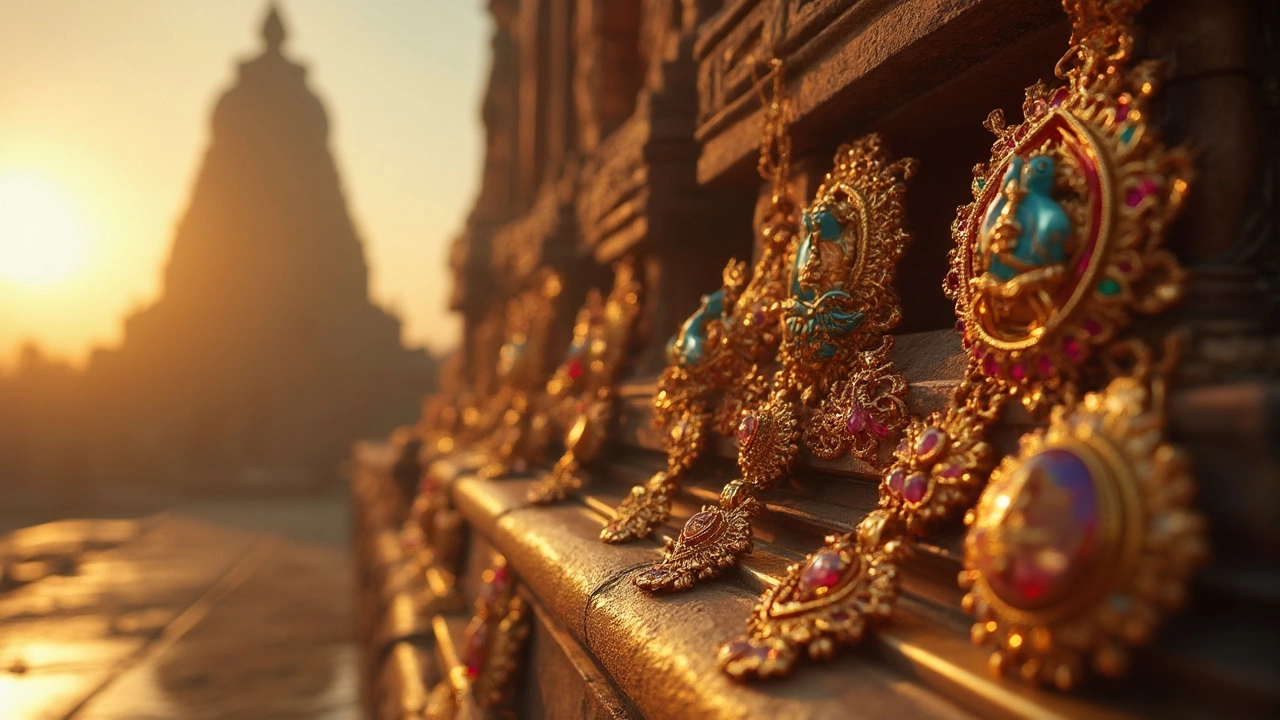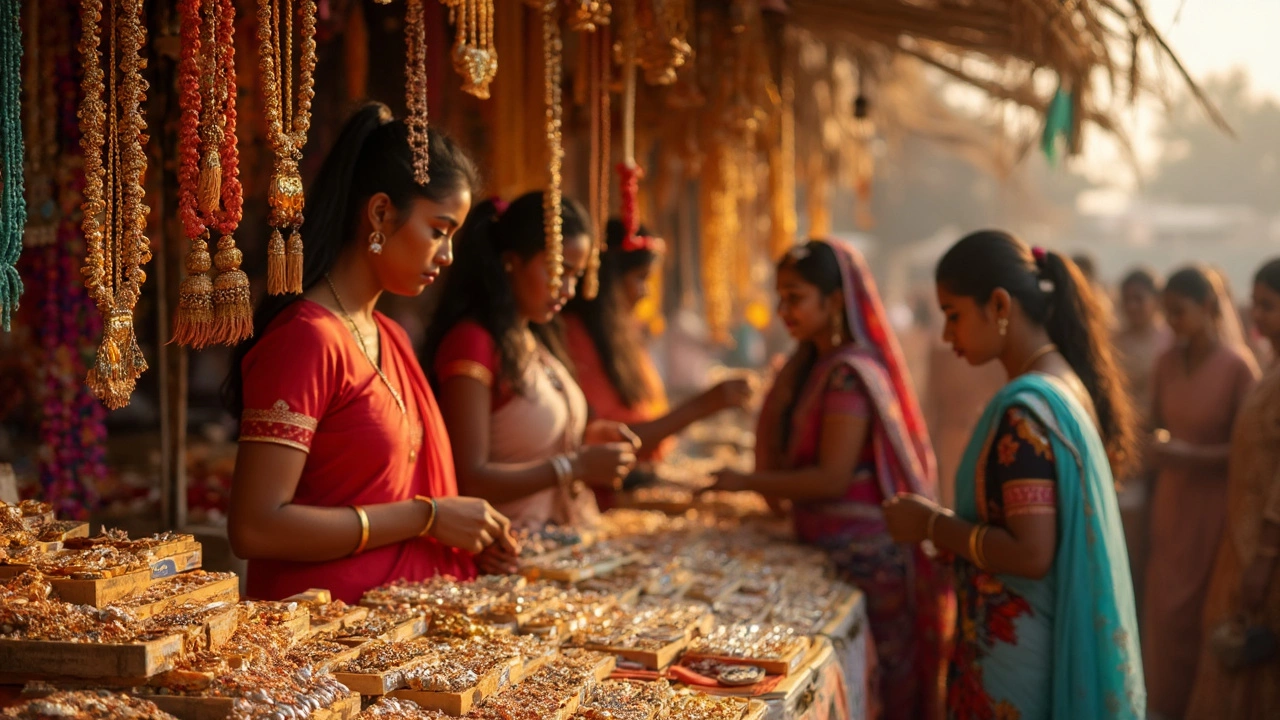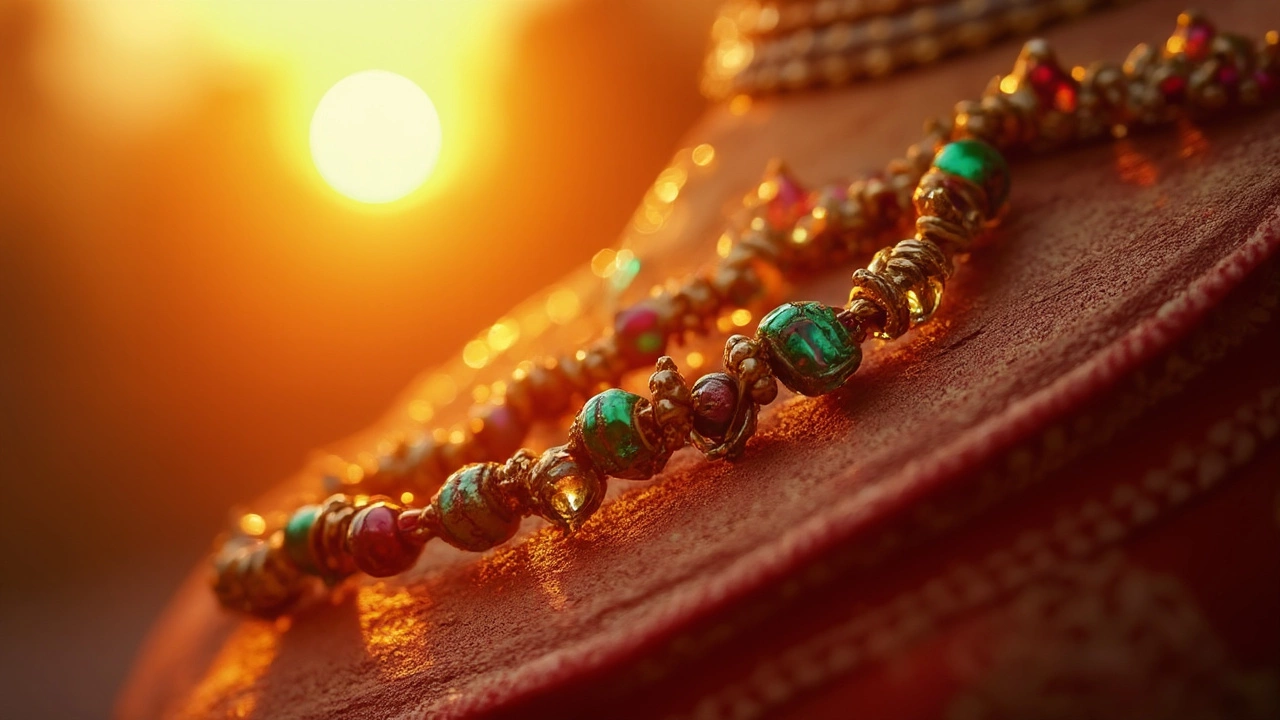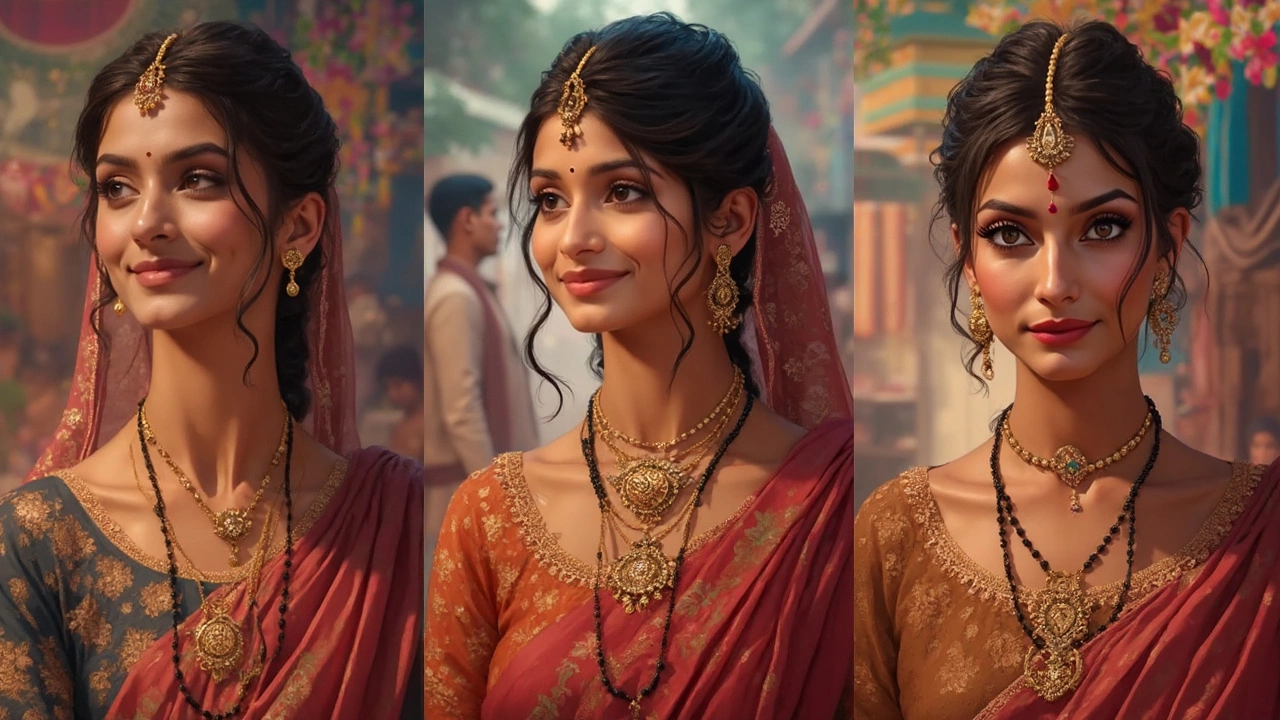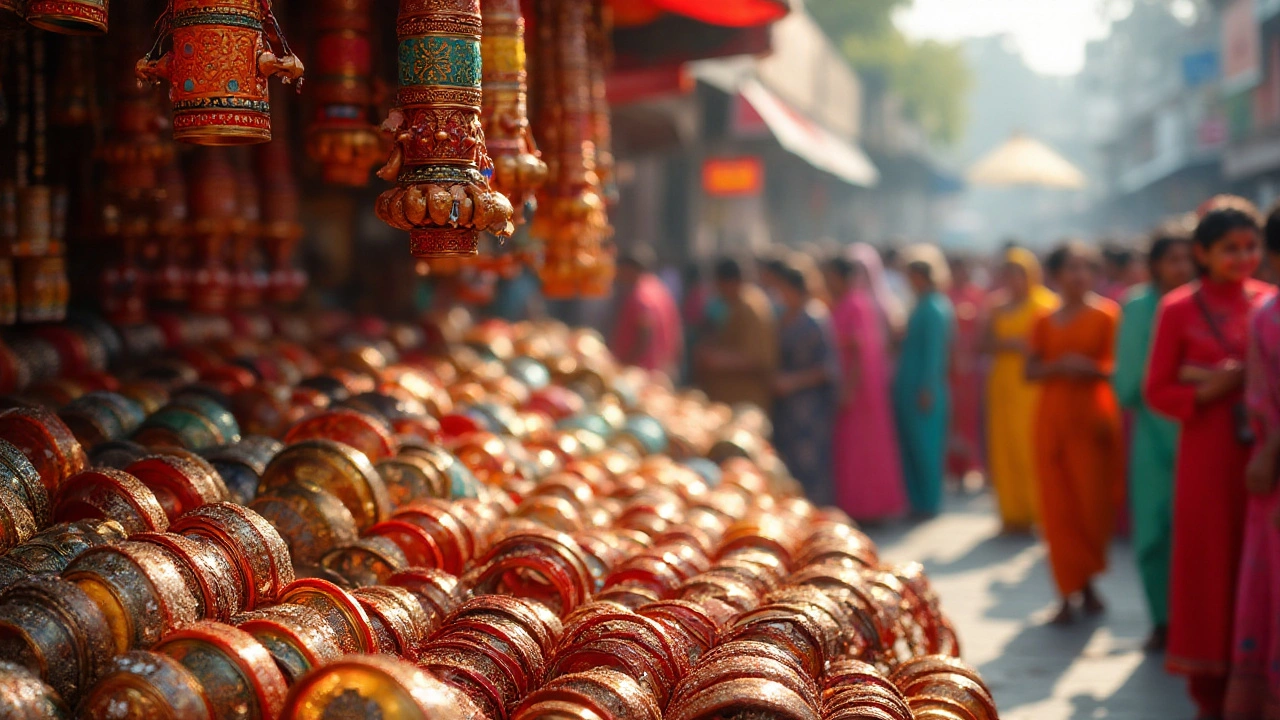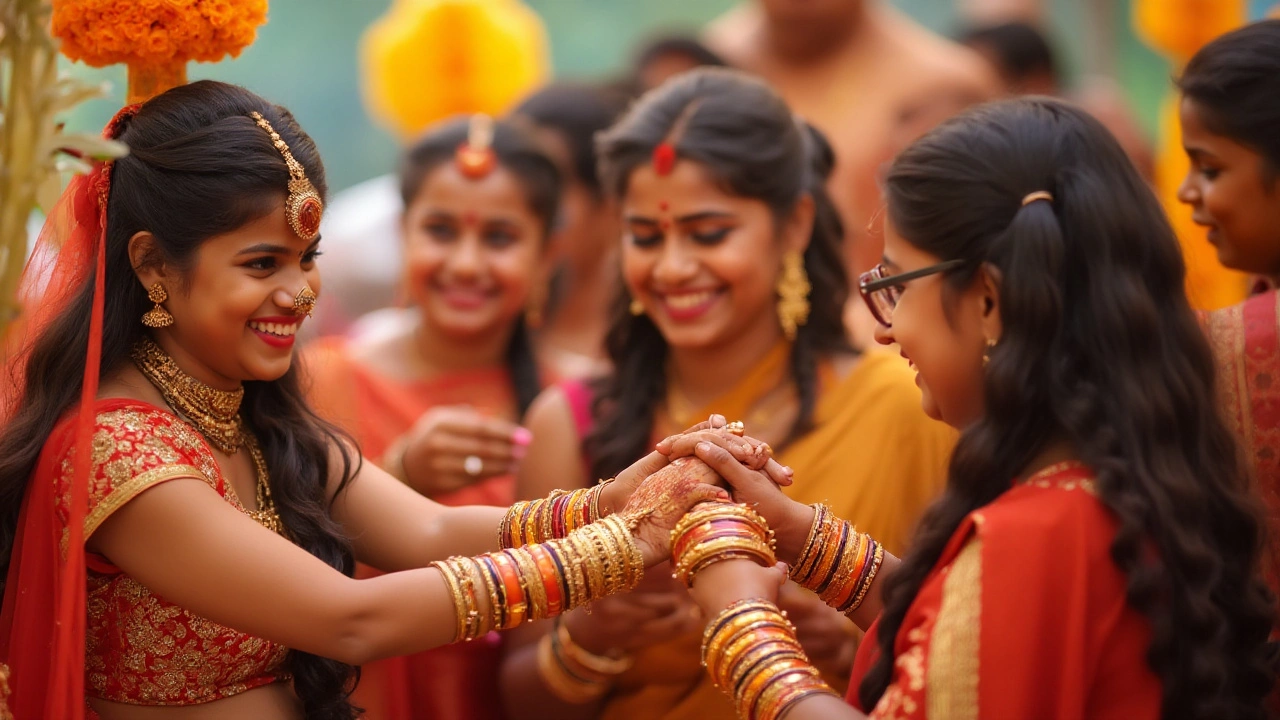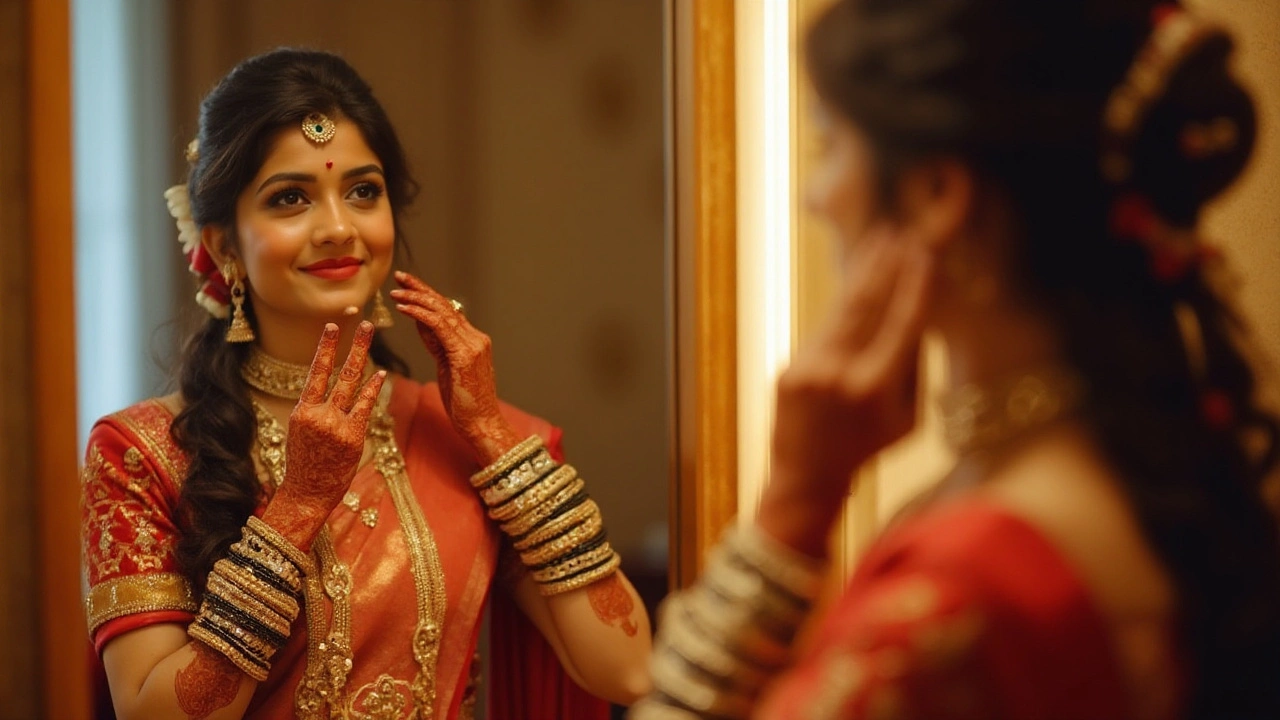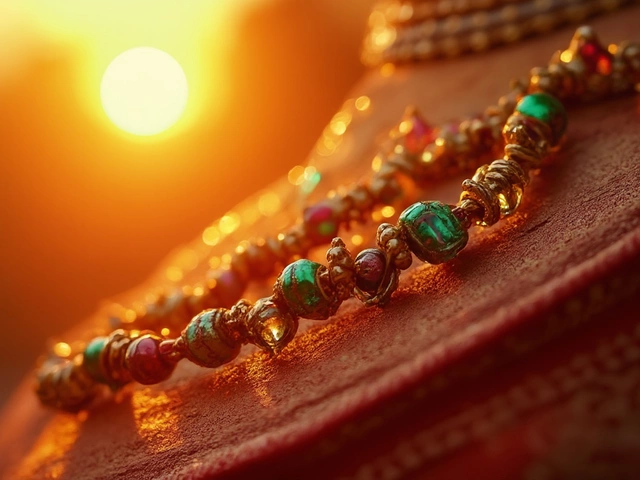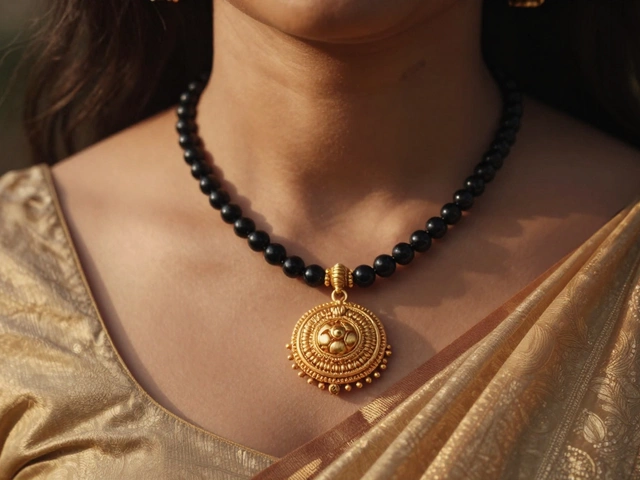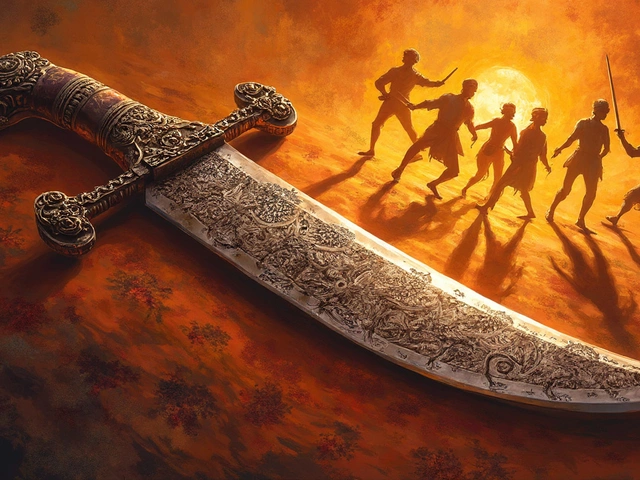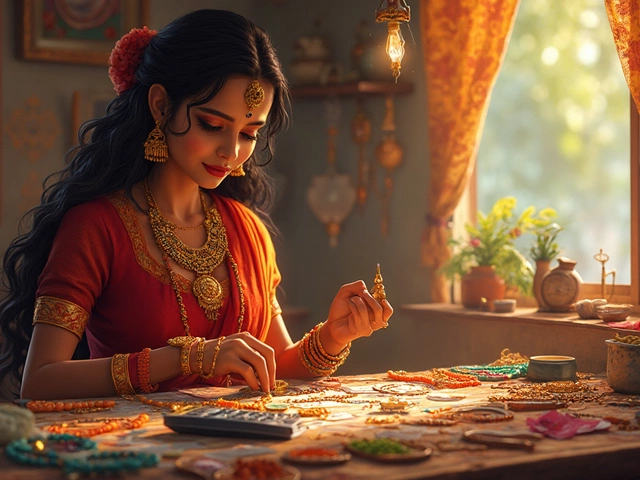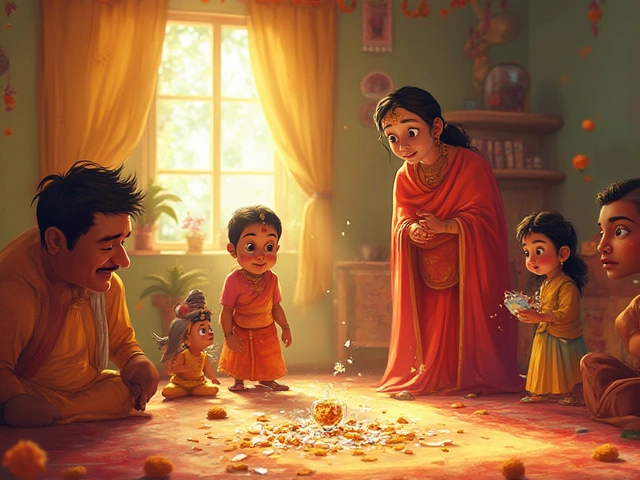Traditional Jewelry – What Makes It Special?
When you think of Indian tradition, the first thing that pops up is often a glittering piece of jewelry. From bright bangles to intricate necklaces, each item tells a story about family, festivals, and regional art. Want to know why these pieces still matter today? Let’s break it down.
Key Styles of Traditional Jewelry
Every Indian state has a signature look. In the North, you’ll find heavy Kundan and Polki sets that sparkle with uncut gemstones. Down South, the gold Jadau and temple necklaces shine with intricate filigree work. West India loves silver Jhumkas and meenakari enamel, while the East goes for delicate ivory or terracotta pieces.
Some designs are tied to specific occasions. A bride usually wears a mangalsutra, a pair of bangles, and a nose stud called a nath. During Diwali, people prefer gold coins and red bangles for good luck. Understanding these patterns helps you pick the right piece for any event.
How to Choose and Care for Traditional Pieces
Start by checking the hallmark. Look for the BIS stamp on gold or the 925 mark on silver. This tells you the purity and protects you from fakes. Next, feel the weight – real gold feels solid, not flimsy.
When you buy, ask the seller about the source of stones. Authentic rubies, emeralds, and pearls have clear certifications. If you’re on a budget, consider heritage pieces that have already aged; they often carry the same charm at a lower price.
Keeping your jewelry shiny is easier than you think. A soft cloth and mild soap work for most gold items. Silver needs a quick polish to avoid tarnish. Store pieces separately in a cotton pouch to stop scratches, especially for delicate enamel work.
Traveling with traditional jewelry? Wrap each item in a small cloth bag and place them in a hard‑shell case. This prevents damage and keeps the pieces from getting tangled.
If you’re hesitant about wearing heavy bangles all day, try wearing them only for special functions. Many folks sleep without them to protect their wrists and preserve the look.
Looking for a gift? A classic set of gold kadi bracelets or a pair of jade jhumkas makes a timeless present. Pair it with a handwritten note about the piece’s cultural roots for extra impact.
Whether you’re a first‑time buyer or a seasoned collector, the key is to enjoy the story behind each item. Traditional Indian jewelry isn’t just an accessory – it’s a piece of heritage you get to wear.
Moti Types in Mangalsutra: What are the Two Main Varieties?
Curious about the types of moti (pearls) found in mangalsutras? This article breaks down the two main varieties, explains how they differ, and why people choose one over the other. It also gives tips on spotting real moti in your jewelry and how to care for each type. If you’re thinking about buying a mangalsutra or just want to know more about its design details, this guide will help you make sense of your options. By the end, you’ll be able to spot the difference and pick what’s best for you.
Should Unmarried Girls Wear Bangles? Traditional Rules and Today’s Choices
Bangles play a big role in Indian culture, but questions always pop up about who should wear them, especially unmarried girls. This article breaks down where this idea came from, what traditions actually say, and how things are changing now. We’ll bust some myths, share cool facts about bangles, and give practical tips for anyone who wants to wear them—no matter your relationship status. If you’re curious about how old rules mix with today’s style, this is for you. Walk away with everything you need to know about bangles, tradition, and owning your look.
Scientific Reason Behind Wearing Bangles: Indian Tradition Explained
Ever wondered if there's more to wearing bangles than just tradition or style? Indian bangles actually have some surprising scientific reasons behind them. This article digs into how bangles are believed to affect health, blood circulation, and even energy flow in the body. You'll also pick up some tips for choosing the right kind of bangles for both comfort and tradition. Get ready for some practical and eye-opening facts about this age-old accessory.
Bangles: Should They Be Loose or Tight for Comfort and Style?
Wondering if your bangles should sit snug or slide freely? This article breaks down the real-world pros and cons of both loose and tight bangles, sharing practical tips and cultural insights. Learn how to choose the right fit for comfort, everyday wear, or that big family event. Get some surprising facts about bangle traditions and sizing tricks from across India. Move past common mistakes and pick bangles you'll actually love to wear.
What is Traditional Indian Jewelry Called?
Traditional Indian jewelry, especially temple jewelry, blends art with devotion, reflecting India’s rich cultural heritage. Known for its intricate designs and religious motifs, this jewelry once adorned gods and goddesses in temples. Today, it's prized in bridal collections and classical dance costumes for its beauty and spiritual significance. Explore the fascinating layers of this timeless Indian treasure.
What Should Be the Shape of a Mangalsutra?
Choosing the right shape for a mangalsutra is more than just a fashion statement; it's a blend of tradition, style, and personal preference. While some prefer the classic round shapes, others may go for modern geometric designs. Understanding the symbolism and cultural significance of different shapes can guide your choice. Whether you're staying traditional or looking for a contemporary twist, here's how to find the perfect mangalsutra shape for you.
How Many Beads Should Be in a Mangalsutra: A Practical Guide
Determining the ideal number of beads in a mangalsutra can influence both its aesthetic and cultural significance. This guide explores the traditional and modern design choices, cultural beliefs, and practical tips for selecting the perfect bead count. We'll demystify why the number of beads matters and explore how it affects the overall design and symbolism of this important piece of jewelry.
Mangalsutra Styles: Exploring the 3 Ties of Tradition
Discover the three distinctive styles of mangalsutra, which are more than just a piece of jewelry. Learn how these designs, deeply rooted in tradition, symbolize marriage and cultural unity. Each pattern holds unique significance and tells a different story. Explore practical tips for choosing the right design and understand what makes mangalsutra essential for Indian brides.
Discovering the Traditions of Indian Bangles: A Guide to Their Types
Indian bangles are a vibrant expression of the country's rich cultural heritage, with each type having its own unique significance and style. This article explores three main types of traditional bangles: glass bangles, metal bangles, and lac bangles, each with its own distinguished craftsmanship and cultural symbolism. Readers will learn about the history behind these beautiful pieces and what they symbolize in various Indian traditions. Knowledgeable tips on how to choose and maintain them for different occasions will also be shared. Uncover the fascinating world of Indian bangles and their enduring cultural impact.
The Symbolic Meaning Behind Gifting Indian Bangles
Gifting bangles holds a profound meaning in Indian culture, deeply rooted in tradition and symbolism. This article delves into the rich cultural significance and historical backgrounds of bangles, exploring their role in various ceremonies and occasions. It also highlights regional differences in styles and the materials commonly used in these ornamental pieces. The emotional and social implications of gifting bangles are discussed, revealing their importance in strengthening bonds and expressing love.
Who Embraces the Allure of Black Mangalsutras?
The black mangalsutra is not merely a jewelry piece; it holds deep cultural importance and evolving fashion trends in its delicate threads. This article explores who is choosing to wear black mangalsutras and why. We delve into the history and cultural significance, discuss its modern representations, and offer insights on choosing the right design for personal style. Discover how black mangalsutras are making a bold statement in contemporary jewelry design.
Cultural and Symbolic Significance of Wearing a Mangalsutra
The mangalsutra is a sacred necklace worn by married Hindu women as a symbol of their marital status and their commitment to their spouse. Traditionally, it signifies the union of two souls and is an important part of Hindu wedding rituals. With its roots deep in Indian culture, the design of a mangalsutra often varies across regions, embodying a blend of tradition and personal expression. This article explores the history, cultural importance, and contemporary designs of the mangalsutra, offering insights into both its ceremonial and modern-day adaptations.

